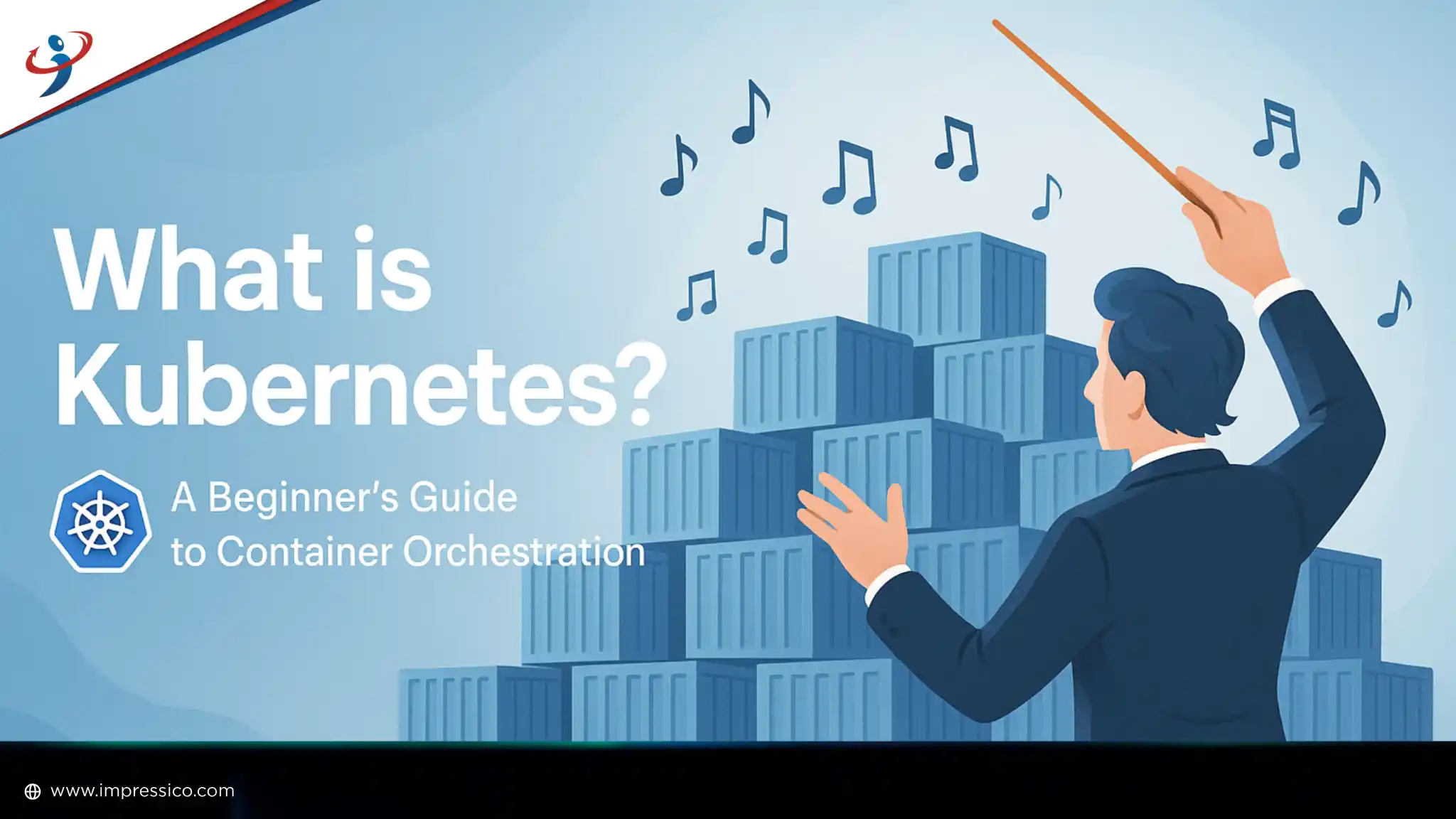What is Kubernetes? A Beginner’s Guide to Container Orchestration

Kubernetes is an open source orchestration system for Docker containers. It allows us to manage containerized applications in a clustered environment. It streamlines DevOps tasks like deployment, configuration, scaling, versioning, and rolling updates.
Many of the distributed applications designed with a focus on scalability consist of smaller services called microservices, which hosting and running using containers.
From Single Containers to Clustered Orchestration
A container offers a remote context in which an app together can work with its environment. To sustain the needs of modern applications and infrastructure, one must maintain containers externally and distribute and load balance them.
Further, data persistence and network configuration make it tough to manage containers and thus, however powerful containers are, they get scalability issues in a clustered environment.
Kubernetes offers
A layer over the infrastructure to manage these issues. Kubernetes uses labels as name tags to categorize its objects, and it can request based on these labels.
Master the Core Concepts of Kubernetes Architecture
Kubernetes Master
Master are the controlling in a Kubernetes cluster. They are responsible for the cluster and monitor the cluster, schedule work, manage changes and respond to events.
The Kubernetes Master comprises four processes that operate on a single node in your cluster, known as the master node.
- Kube-apiserver
It serves as the master’s brain and functions as the master’s front-end. Kube-apiserver employs the RESTful API and processes JSON through a manifest file. Manifest files validate the application’s state, such as the record of intent, and are authorized and deployed to the cluster. It exposes an endpoint, enabling kubectl to issue commands and operate on the master. - Cluster Store
It provides persistent storage and maintains a state. It utilizes etcd, a distributed, reliable, and observable open-source distributed key-value store. Etcd serves as the cornerstone of distributed systems, offering a central hub for cluster coordination and state management. It relies on etcd as the ‘source of truth’ for the cluster, responsible for storing and replicating data used by throughout the entire cluster. - Kube-controller-manager
Kubernetes controller manager implants the essential control loops sent with Kubernetes. It monitors the collective state of the cluster via API server and makes changes trying to move the present state towards the chosen state. - Kube-scheduler
This is the procedure that monitors API-server for new pods and assigns workloads to particular nodes in the cluster. It is accountable for tracking resource use on every host to ensure that loads are not programmed in surplus of the available resources.
Kubernetes Node
The servers that do the real job are known as nodes. Every node in a cluster runs two procedures:
- Kubelet
-
- the key Kubernetes mediator on the node
- lists node with the cluster
- monitors API server for workload
- instantiate pods for carrying out the work
- reports back to master
- Kube-proxyNetwork proxy reflects Kubernetes networking services on every node. It safeguards every pod and gets its own exclusive IP. If there are numerous containers in a pod, then they all will have the same IP.
Kubernetes Objects
- Pod
A pod serves as the fundamental building block of Kubernetes, positioned as a single unit on a node within a cluster. A pod provides an isolated environment for running containers. Typically, a pod runs a single container, but in some cases where containers are tightly integrated, you can run two within a pod. The pod connects to the rest of the environment using an intersection of networks. - Service
Kubernetes Pods have a finite lifespan, and once they expire, they cannot be revived. Since Kubernetes is responsible for maintaining the expected state of the application, when pods crash, it adds new pods with different IP addresses. This can result in issues with pod detection because there is no way to determine which pods have been removed or added. This gets service into action. Any other applications can find your service through Kubernetes service discovery. A Kubernetes Service:
-
- is persistent
- delivers discovery
- load balances
- offers VIP layer
- classifies pods by label selector
- Volume
A volume signifies a location where containers can hoard and admit information. If a container smashes, it will result in the loss of on-disk files, as they are transient. Secondly, when running containers along in a Pod it is often vital to share files between those containers. A Kubernetes volume will outlast any containers working within a pod, preserving data across container restarts. - Namespace
Namespace functions as an alliance mechanism within Kubernetes. Services, replication controllers, pods, and volumes can effortlessly cooperate within a namespace. It delivers a degree of isolation from other parts of the cluster.
In environments with numerous users spread across multiple teams or projects, we envision using namespaces. Namespaces provide a way to divide cluster resources among various users.
Kubernetes provides a powerful abstraction layer over infrastructure, turning a group of machines into a unified container management platform. Its master-node architecture ensures desired state management, while objects like Pods, Services, and Volumes work together to run resilient, scalable, and discoverable applications. While the learning curve can be steep, understanding these core components is the first step toward mastering modern container orchestration.
FAQs belongs to Kubernetes Architecture
-
What is the main difference between Kubernetes and Docker?
Docker is a platform that builds and runs individual containers. Kubernetes is a system for orchestrating and managing multiple containers across a cluster of machines. They are often used together.
-
Why is Kubernetes so popular?
It automates critical tasks like deployment, scaling, load balancing, and self-healing (restarting failed containers), making it essential for managing complex, scalable microservices applications.
-
What is a Kubernetes Pod vs. a Container?
A container runs an application. A Pod is the smallest deployable unit in Kubernetes and can host one or more tightly-coupled containers that share storage and network resources.
-
Is Kubernetes only for public clouds?
No, Kubernetes is cloud-agnostic. It can run on public clouds (AWS, GCP, Azure), on-premises data centers, and in hybrid setups, offering incredible deployment flexibility.
-
When do you not need Kubernetes?
For simple applications running on a single machine, the complexity of Kubernetes is unnecessary. It’s best suited for distributed, microservices-based applications that require high availability and scaling.
For Kubernetes services, you can hire a professional kubernetes consulting company like Impressico Business Solutions, which has excellent and diligent Kubernetes experts to help you with your project.
